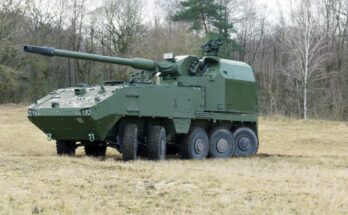
Chief of Naval Operations Adm. Michael Gilday released a public version of his 2022 Navigation Plan (NAVPLAN) that includes details of the Navy’s desire for a fleet of 373 battle force ships and 150 unmanned vessels to serve alongside them. The document is intended to outline the Navy’s warfighting requirements to Congress, which is different than the long-range shipbuilding plan included in the FY23 budget request that also considers industrial base capacity and funding availability.
The NAVPLAN calls for the following fleet composition by 2045:
- 12 Columbia class ballistic missile submarines
- 12 aircraft carriers
- 66 fast-attack and large payload submarines (this includes the Virginia class and follow-on SSN(X)
- 96 large surface combatants, including DDG 51s and the follow-on DDG(X)
- 56 small surface combatants (i.e. Constellation class frigates)
- 31 large amphibious warships
- 18 Light Amphibious Warships
- 82 combat logistics ships and auxiliary vessels
- 150 unmanned surface and subsurface platforms
Gilday said reaching the desired fleet size will require 3-5 percent budget growth above inflation. If that rate of growth is not possible, he said the Navy will “prioritize modernization over preserving force structure,” resulting in a smaller fleet.
The Navy’s FY23 budget request included a range of future shipbuilding scenarios depending on the availability of resources. With no real budget growth, the Navy would end up with as few as 318 ships by 2045, according to the FY23 shipbuilding strategy. The optimal scenario, resulting in a fleet of 363 ships by 2045, would require an additional $75 billion in real budget growth beyond the current five-year spending. But even that scenario falls short of the new 373-ship warfighting requirement outlined in the NAVPLAN. Compared to the FY23 shipbuilding strategy, the NAVPLAN fleet comprises more large surface combatants, small surface combatants, and attack submarines, but it has fewer amphibious ships and combat logistics and auxiliary vessels.
Shaun's deep-rooted interest in military equipment continues in his role as a senior defense analyst with a focus on the United States. He played an integral role in the development of Forecast International's U.S. Defense Budget Forecast, an interactive online product that tracks Pentagon acquisition programs throughout the congressional budget process. As editor of International Military Markets – North America, Shaun has cultivated a deep understanding of the vast defense markets in the United States and Canada. He is a regular contributor to Forecast International's Defense & Security Monitor blog and has co-authored white papers on global defense spending and various military programs.




